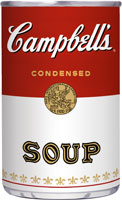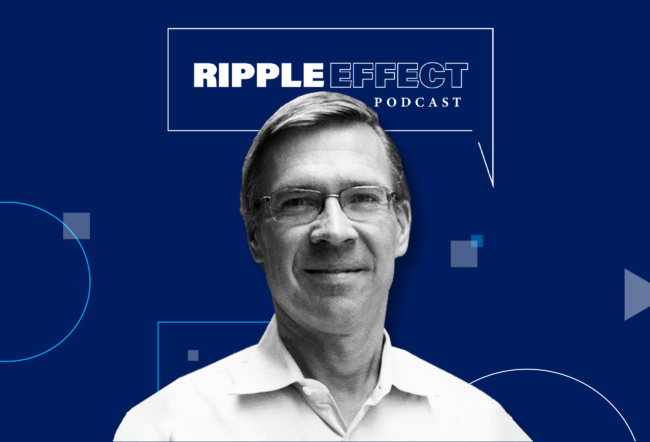Since 1869, Campbell Soup Company has transformed tomatoes, celery and carrots, among other ingredients, into mainstays of the American lifestyle. But as the culture wars in the U.S. have escalated, any company — even a seller of soup — can count on drawing fire from all sides of the political spectrum. When that firing starts, Dave Stangis, Campbell’s vice president of corporate social responsibility (CSR), will be standing at ground zero.
By the time Stangis joined the company in 2008, it had already begun its rise in the CSR firmament. A global manufacturer with net sales of $7.5 billion in fiscal 2009 and 20,000 employees, Campbell has a presence in 120 countries with such brands as V8, Pepperidge Farm, Goldfish crackers and Franco-American sauces. Last year, it ranked second among American companies perceived by the U.S. public as the most socially responsible, according to the Corporate Social Responsibility Index of the Boston College Center for Corporate Citizenship and the Reputation Institute.
But earning a reputation as a solid citizen does not confer a mantle of sainthood on any company, as Stangis knows better than most executives. He spent 11 years at Intel, beginning in 1996, where he held several positions, including external affairs manager and senior engineer. Before his arrival, the company had weathered several crises of public confidence, including the discovery in 1994 of a tiny flaw in the company’s Pentium microchip which the company failed to disclose to the public. Four months later, a professor of mathematics at Lynchburg College in Virginia discovered the flaw himself, posting the information online and sparking an Internet maelstrom that eventually reached the mainstream press, including The New York Times.
Although Intel fixed the flaw in later versions of the chip, the company took a financial hit — paying $450 million to replace the defective part — and a reputational one. But the tide began to turn, with Stangis’ help. In addition to revising and publicizing the flaw, the company formed an issues and prevention management group, which earned the company positive marks for crisis management. Along with only Cisco and Starbucks, Intel has been one of America’s “Best Corporate Citizens” on CRO (Corporate Responsibility Officer) magazine’s list every year since its inception in 1999.
Food Fights and Gay-bashing
Campbell Soup has been no stranger to controversy, either. In 2000, a “food fight” erupted when U.S. consumer and environmental groups, concerned about the lack of safety testing on foods containing gene-altered crops, urged the company to stop using gene-spliced ingredients in its soups, breads and juices. Campbell drew fire because the company had licensed the first genetically modified food — the Flavr Savr tomato — engineered for a longer shelf life.
Campbell replied that the Flavr Savr, like all ingredients it uses, is safe and meets all government requirements, including labeling. The U.S. Food and Drug Administration backed Campbell by stating that special labeling for these modified tomatoes was not necessary. (The Flavr Savr was sold for only a few years; production ceased when mounting costs prevented it from becoming profitable.)
More recently, Campbell Soup drew fire from conservative lobbying groups for, as one of the groups put it, “openly helping homosexual activists push their agenda.” In 2008, the American Family Association (AFA) took notice when Campbell began promoting its Swanson line by purchasing two, full-page advertisements in the nation’s largest magazine for gays, The Advocate.
The ads depicted a lesbian couple and their son. “Not only do the ads cost Campbell a chunk of money,” stated Donald Wildmon, founder and chairman of the AFA, “but they also send a message that homosexual parents constitute a family and are worthy of support.” Campbell responded by explaining that the ads are simply an attempt to reach a wider audience. “For more than a century, people from all walks of life have enjoyed our products,” a company spokesperson stated at the time. “We will continue to try to appeal to all people in ways that are meaningful and relevant to them.”
Building Support for CSR
In his presentation at Wharton, Stangis focused on perhaps the most enduring challenge for CSR professionals: building and maintaining support within one’s own company, especially in a recession, when indiscriminate do-gooding will invariably raise eyebrows among cost-conscious colleagues.
He pinpointed the challenge by discussing two global surveys conducted in 2008 by McKinsey, which canvassed 238 CFOs and investment professionals. “How Virtue Creates Value for Business and Society” stated, among other conclusions, that while investors often see CSR as part of the company’s long-term strategy, fully 50% of the CFOs surveyed view CSR primarily as a compliance issue — that is, avoiding trouble — rather than a positive force for change.
To add to the challenge, many metrics and indices may now exist for evaluating the impact of CSR, according to the McKinsey surveys. However, with the exception of certification and accreditation standards, most CFOs and investors do not find these metrics and indices to be particularly convincing or useful.
When you’re trying to build support for CSR within your own company, Stangis said, “You have to keep making it clear to your colleagues that CSR is not tree hugging. It’s a way to improve the business.” And to demonstrate the link between the business and its CSR, “you have to have metrics. If that’s what drives the company’s other goals, metrics have to drive CSR, too.”
By far, the easiest “sell” for CSR remains environmentally based improvements to operations, because they can be shown to save money for a company. At Campbell, sustainable packaging for frozen food, condensed soup and cracker cartons is expected to save more than 500,000 pounds of packaging materials and almost $1.5 million, Stangis told Sustainable Industries online magazine in 2009.
In addition, a freight optimization program is designed to eliminate more than 1,700 trucks in the Campbell network and save more than 225,000 gallons of fuel. A closed-loop water-and-heat recovery system at one soup plant is projected to save more than $1.2 million per year, while also saving millions of gallons of water per week.
Today, Stangis, who earned an MBA from the University of Michigan and a Master of Science in occupational and environmental health from Wayne State University in Detroit, is working to measure progress in areas of CSR where payback remains difficult to quantify. For example, Campbell is big on “employee engagement,” reasoning that employees who are truly excited about their company will be more enthusiastic about volunteering for projects that improve their communities. “Our goal is 100% employee engagement,” said Stangis. To measure that, the Gallup Organization has surveyed Campbell employees every year since 2001.
The survey began badly. The first year, the “engagement ratio” for the top 350 executives at Campbell was 1:1 — among the lowest Gallup had ever seen in a Fortune 500 company. In other words, for every executive who was engaged in the company’s efforts to build the business, one executive was actively disengaged. By 2008, however, the engagement ratio among top executives reached an all-time high of 77:1. Clearly, said the company’s 2008 annual report, “we’ve come a long way.”
Campbell recently launched a program called Reading Stars, where company volunteers mentor struggling readers in Camden, N.J., the site of company’s headquarters. “We interview employees and demonstrate their increased level of engagement,” said Stangis. “But more importantly, we can rigorously and quantitatively measure the improvement in reading literacy of the kids that come through the program…. You can’t expect your colleagues to become CSR experts,” he noted during his presentation. “A large part of my responsibility is translating, so they don’t have to become experts.”
Stangis, who was recently named one of the 100 “Most Influential People in Business Ethics” by Ethisphere magazine, continues searching for new ways of demonstrating how the alignment of social and business forces directly affects the bottom line. He pointed to the company’s efforts to “continuously improve the health and wellness profile of our products,” by reducing, as one example, the sodium levels in its soups. Despite “the tough economy in 2009, we grew our sales across several product lines by 10%, while delivering better food to consumers and better choices for their health.”
But no matter what you accomplish in CSR, he emphasized, “if you cannot tie your efforts directly to the business, you will lose support.” Accordingly, one of his major campaigns today is bringing CSR metrics into employee compensation. The hours spent in volunteer projects are now a factor in determining pay for employees. “Companies everywhere are still struggling with CSR. We’re all still learning how to make our case for it,” he said.
The fact that CSR has become so visible can be an advantage to a far-sighted company, Stangis added. “It’s not just activists and NGOs [non-governmental organizations] who want to know about our CSR. It’s also long-term investors.”



